Steve Hunter - Interview
by John Clarkson
published: 23 / 12 / 2017
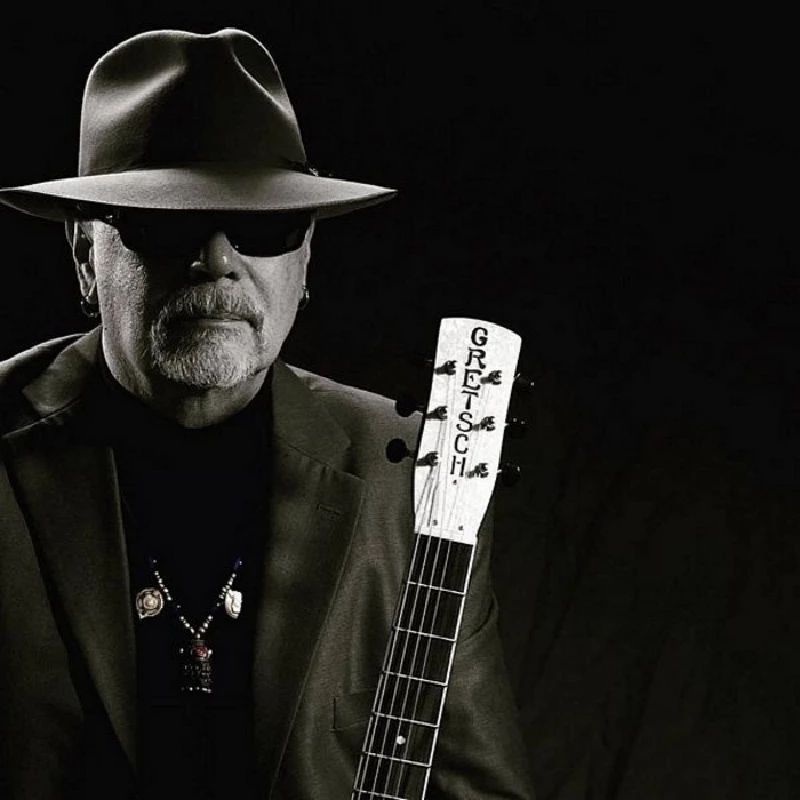
intro
John Clarkson speaks to acclaimed guitarist Steve Hunter about his just released seventh solo album, 'Before the Lights Go Out', which was recorded despite him battling blindness and sight difficulties.
Legendary guitarist Steve Hunter has just released his seventh solo album, 'Before the Lights Go Out'. The new album's title and its front cover photograph, which shows a blind person's cane propped up against a wall, makes reference to Hunter's failing eyesight and his battle against a Pigmentary Glaucoma. Hunter first came to prominence in the early 1970's, lending his strident guitar work to Lou Reed's controversial 1973 concept album 'Berlin', which told of a doomed couple, whose relationship collapses in a blur of drug abuse, infidelity and domestic violence and that finally culminates in her suicide. Steve Hunter also appeared with Reed, touring with him and volleying guitar riffs with fellow guitarist the late Dick Wagner, on the former Velvet Underground front man's classic 1974 live album 'Rock and Roll Animal' and its 1975 follow-up 'Lou Reed Live'. Hunter worked with Reed a final time between 2006 and 2008 when, after five shows at St Ann's Warehouse in New York, they toured 'Berlin', its battered reputation restored, with a 30-piece band and 12 choristers across Europe. Hunter also contributed guitar with Wagner to five Alice Cooper albums including the bestselling 'Billion Dollar Babies' (1973), Aerosmith's 1975 'Get Your Wings' and Peter Gabriel's eponymous 1977 debut solo album, including the hit single 'Solsbury Hill'. In the early 2000's he also worked with Tracy Chapman, adding dulcimer, lap steel and electric guitar parts to her 'Telling Stories' (2000) and 'Let it Rain' (2002) albums. After releasing his debut solo album 'Swept Away' in 1977, Hunter went on to record another five solo albums 'The Deacon' (1989), 'Hymns for Guitar' (2008), 'Short Stories' (2009), 'The Manhattan Blues Project' (2013) and 'Tone Poems Live' (2014) before putting out 'Before the Lights Go Out'in September. 'Before the Lights Go Out'swings between blues and other genres. It opens with the menacing 'On the Edge of Uncertainty', and is followed by the sweltering 'Mojo Man' on which the first of two solos is played by Joe Satriani. Other highlights include the meandering and acoustic 'Cinder Block', the ambient 'Ice Storm', the Indian psychedelic-influenced 'Under the Bodhi Tree' and the reflective and brief closer 'Happy Trails', which in the otherwise entirely instrumental album is the only track to feature a vocal, courtesy of Karen Hunter, who is a professional singer and also Hunter's wife. Pennyblackmusic spoke to Steve Hunter about 'Before the Lights Go Out', working with Lou Reed and began by asking him about his sight difficulties. PB: ‘Before the Lights Go Out’ makes reference in both its sleeve and title to your failing eyesight. Yet it seems to be far from a goodbye album. SH: Well, it is not a goodbye album. There is, however, a chance that I might lose my sight. All the opthalmologists that I have seen have all said the same thing that the Glaucoma that I have has reached a point where they cannot really predict if I am going to lose my eyesight. They can keep the pressure there under control but there is still a risk –and it is a pretty good risk – that I may lose my sight all together or at least most of it, so the title came about just out of the fact that I thought, “Maybe I better do an album now while I can still see well enough to do what I want to do.” It is not, however, technically a goodbye album, and there won’t be one of those until my eyes go away and I can’t see anymore. PB: What is the actual problem with your eyesight? SH: I have these blind spots. We all have two blind spots, one in each eye. Where your optic nerve meets the eyeball there is a blind spot. I think we all find them when we are little kids, but I have a whole bunch of them and there are parts of my vision where I can’t see anything. There is nothing there. My left eye is almost all gone. There is a little peripheral where I can still see, but most of it is gone. Over the years that blind spot has just increased. PB: You have said that because of your eyesight problems live work is difficult but not impossible. What about studio work? Is that hard? SH: Studio work has a freedom because if you are not in front of an audience and if you make a mistake you can always do it again, but you can’t do that if you do it live. With my eyesight I see some things but I don’t see others, so I can get really disorientated on stage. When I am in the studio I can get myself lit the way I want to be lit. I can get myself in a position where I can see the best, so I have more control of the environment in there and so if I make a mistake I can always do it again. PB: You have worked with some of the great lyricists of the last fifty years in Lou Reed, Peter Gabriel and Tracy Chapman, yet have no lyrics to fall back in your own material which is largely instrumental. You still, however, manage to make it really commanding. Do you have a particular set of rules or techniques to make it so striking? SH: I fell in love with instrumental music back when I was a child and when I was eight/nine years old. There was a duo called Santo & Johnny and they put out a single called ‘Sleep Walk’, which completely turned my head around as a kid. I thought, “Oh my God. There are no lyrics, just a beautiful melody.” That has been stuck in my head this whole time, my whole career, but having said that if you work as a session musician or a back-up musician there is nothing more wonderful than to play behind someone who writes beautiful lyrics. I tried to write lyrics many times in my career and I would write something that I thought was okay, but then I would listen to a Peter Gabriel or a Tracy Chapman song and realise that I am not a lyricist. I just can’t write good lyrics (Laughs), but I do like melody and like writing melody and so I thought I would be an instrumentalist. It is a small genre. It is not one of those kind of things where it is ever going to be as popular as something like Peter Gabriel or Tracy, but that is where my soul lies. PB: The track titles on ‘Before the Lights Go Out’, ‘Ice Storm’ and ‘Under the Bodhi Tree’ – are all really evocative. Do you start with a title and build the music around that or does it work in another way? SH: I have always been fascinated by titles. Debussy, for example, has this beautiful symphony called ‘Afternoon of a Faun’ and the imagery he creates with the orchestra in that sets that whole scene up, and it is only when you read the title that it completely makes sense. In a lesser sense that is kind of what I am trying to do. A lot of the time if I think of a title it will evoke for me a melody or a certain vibe or maybe a tempo or a groove, but then there are other times when I will come up with the instrumental first. ‘Cinder Block’ from the new album, for example, was this cool thing that I figured out how to play on acoustic guitar with strange tuning. That was fun to play and it became this song, but the first thing I thought of when I was listening back to it was the cinder blocks where I grew up in Decatur, Illinois. There are parts of it which are very rural and cinder blocks are used in all sorts of things. It reminded me of that and the rural communities in and around Decatur. ‘Ice Storm’ was the same sort of thing. It reminded me of how in the winter when we would get these tremendous ice storms of how beautiful it all looked. About 70% of the time a title will evoke something for me, but I will also do it the other way round when I will write a song and I will also have to come up with the title and that works just as well. Sometimes it is more fun to think “What is this song doing? What do I see when I hear this song?” PB: You had one of the great musical guitar partnerships in the 70’s with the late Dick Wagner, yet you have said in the past it worked because you contrasted each other. In what way did you contrast each other? SH: It was really funny because I am not one to believe in astrology. His birthday was, however, six months to the day after my birthday (Laughs). His birthday was December 14th. Mine was June 14th. It was the most bizarre thing, and we talked about that often. We thought almost exactly the opposite on guitar, which made him wonderful to work with. I would play something. He would play something naturally in exactly the opposite position or in a slightly different way from me and vice versa, so it was almost like when we played things together we didn’t have to think things out. We worked out the parts and harmonies and solos, but we almost never worked the rhythm guitar parts out together. We just naturally played them that way. It was amazing. I have never worked like that with anyone since. We thought almost 180 degrees opposite from each other on guitar but it worked. It was almost like a puzzle. It fitted so well together it was ridiculous. It was almost uncanny sometimes. PB: In light of this you gave the first of two solos on ‘Mojo Man’ from the new album to Joe Satriani. Why did you decide to do that? SH: I wrote the song a few years ago, and I purposefully had two solos in it. I wanted to have a contrasting solo approach to each part, but when I was working on it in my studio and I first heard it I thought, “Oh wow, this would be a perfect solo for Joe Satriani, and then I can come in with something tricky after that and it will be a wonderful contrast between the two of us,“ and so I asked him if he would like to do it and agreed. It just worked. I like Joe’s playing a lot and when he and I play together there is something that happens which I like. I used him on ‘The Manhattan Blues Project’ for the same reason. He is a great player and I like the way how he thinks. It is great playing after him, but it can be a little scary sometimes (Laughs). PB: Your wife Karen appears on vocals on the last track, ‘Happy Trails’. What’s her own musical background? SH: She was a singer in London. She worked with both Giorgio Moroder and Chas Chandler and came really close to getting some good deals, but you know how the music business is. She sang for many, many years. She did a lot of jingles and sessions in and around London. She also did a tour of England with Gary Numan in the 80’s, so she has been singing for a lot of years. She also had a solo album in –I think- 2000. She has been singing all along, so I use her voice whenever I get a chance. Even though it was an instrumental album I thought it would be nice for her to appear on the last song. PB: You infamously worked on Lou Reed’s ‘Berlin’, yet it took almost 35 years to take that album out on the road in 2007 and 2008. Why did it take so long? SH: I wish I knew the answer to that. We tried to get that on the road I don’t know how many times. The way that that we finally did was the way we wanted to do it back in the 70’s. The record label just hated that album. The critics beat it up. It really hurt me because I had done so much on the album it felt like it was my album. I felt really close to it, and I got really angry that nobody was seeing what a great record it was. I thought it had some of Lou’s best lyrics and best songs. It was beautiful stuff. I was really hurt that it didn’t do better at the time. So, the whole thing was put on the back burner, and then all these years later the people at St Ann’s Warehouse, a venue in New York, decided that they would like to do ‘Berlin’. I don’t know all the details but they contacted Lou and Bob Ezrin, who produced it, and Bob called me and I was just thrilled and like, “Yes, it is about time we did this” (Laughs). It was so wonderful. The first rehearsal with the children’s choir they used on ‘Sad Song’ in the live shows was just fabulous. We went on from playing that gig at St Ann’s to touring Europe with it. That was probably one of the high points of my career actually doing that album live. PB: Final question. You have been working on an autobiography. Is that still in the pipeline? SH: Yes, I have been a little slow with it unfortunately as ‘Before the Lights Go Out’ took up a lot of my time. Karen and I are planning to move to Spain towards the end of the year, and once we get there I am planning to get into it again. Spain is a beautiful place and it is a great place to be creative in. I am still going to make music. As long as I have my eyesight I am still going to make music but I am hoping to try to get back into the book again. PB: Thank you.
Band Links:-
http://www.stevehunter.com/https://www.facebook.com/stevethedeaconhunter/
Have a Listen:-
Picture Gallery:-
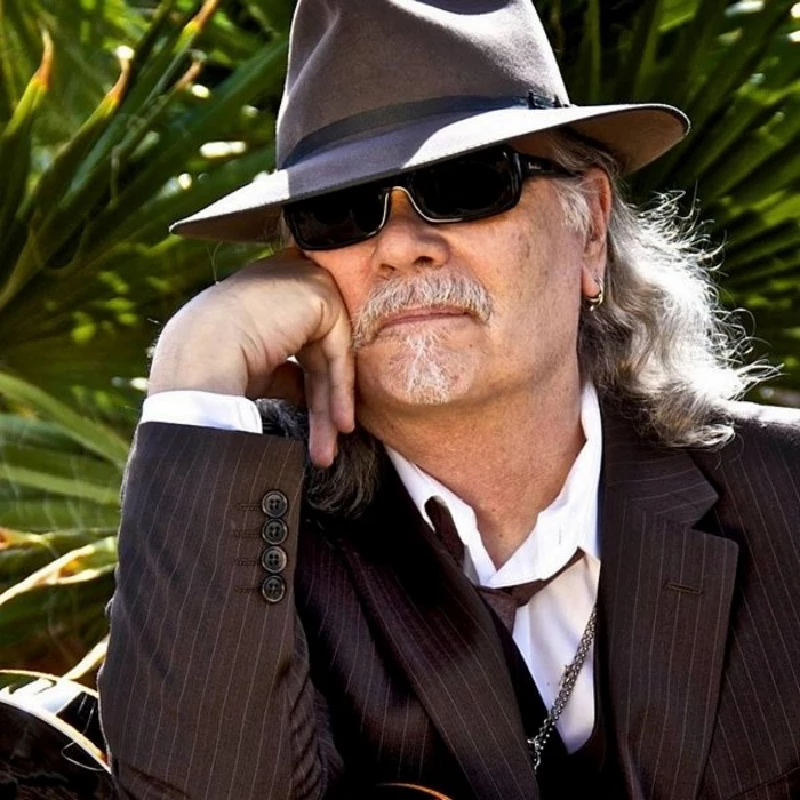
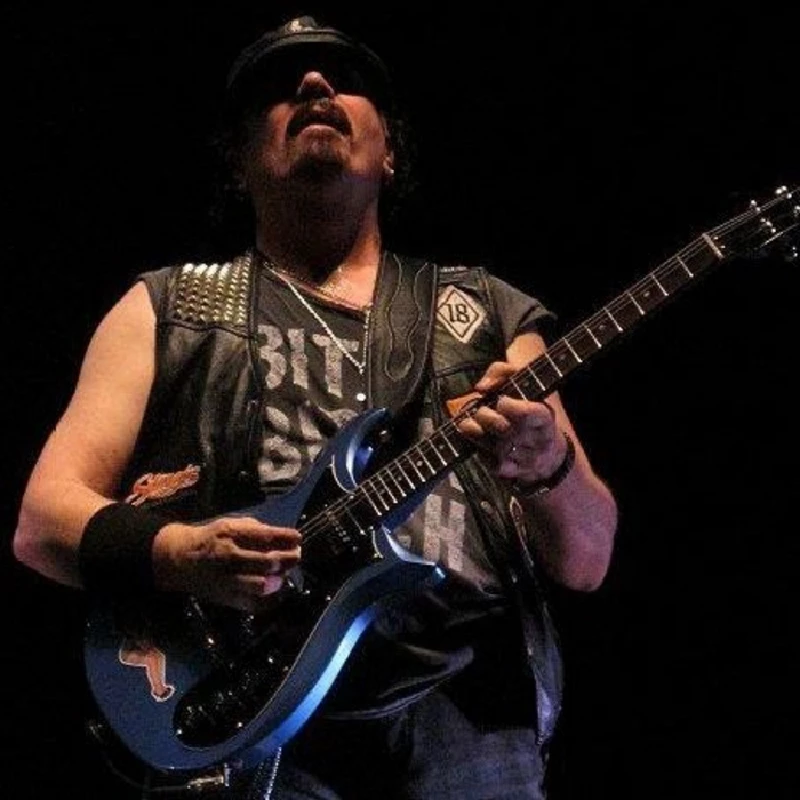
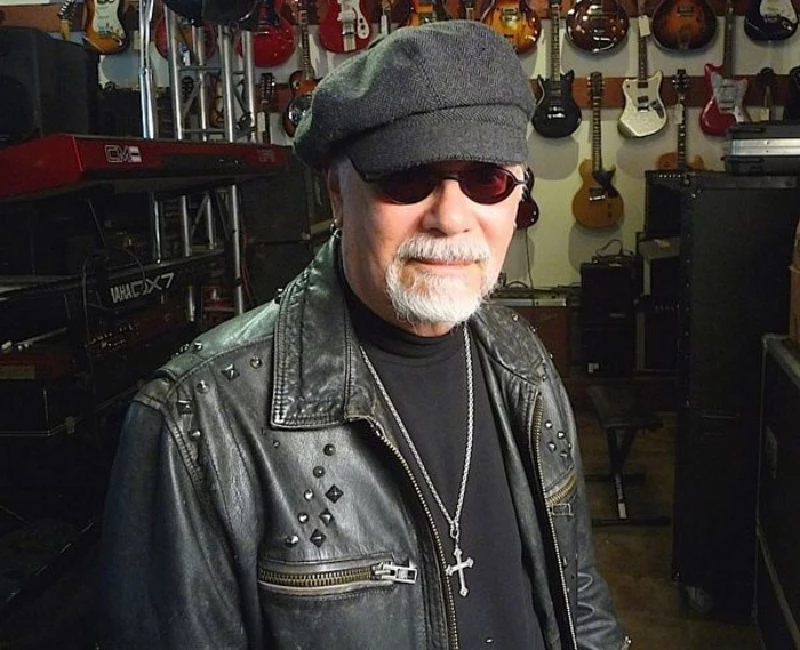
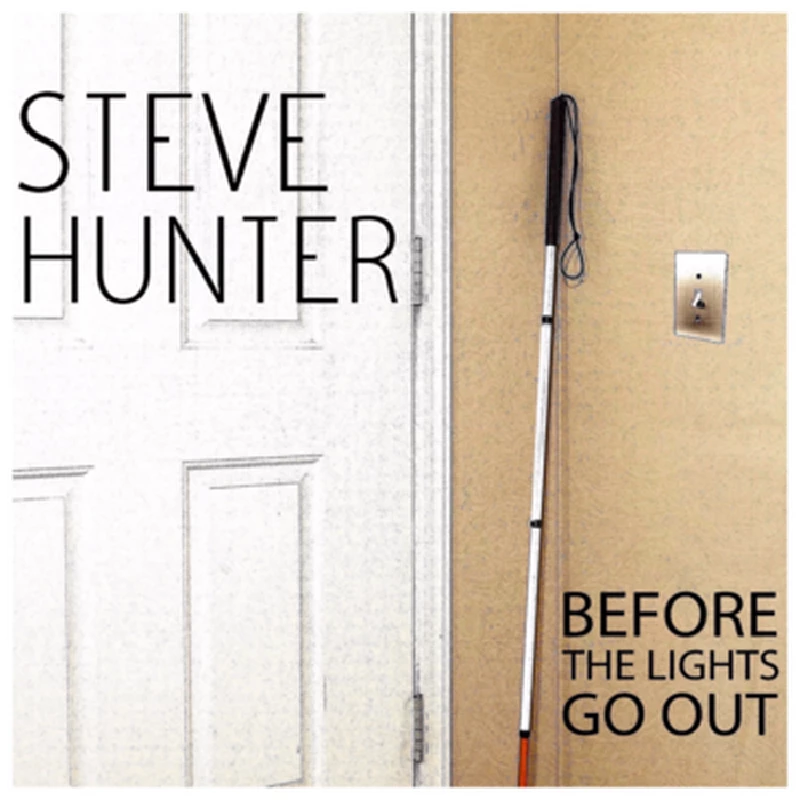
Visitor Comments:- |
| 847 Posted By: Rene Wijgh, Boston MA on 02 Nov 2017 |
|
Great interview, with a great player, who has an extensive portfolio of artists he worked with. My personal most favorite era of Steve's work, would have to be the twin guitarwork on Lou Reed's Rock and Roll Animal and the 1975 "Live",with Dick Wagner. Nicknamed often as "The dynamic duo" and "Silver and golden guitars" they continued their twin guitar formula working with Alice Cooper. Thank you for this.
|
interviews |
|
Interview (2020) |
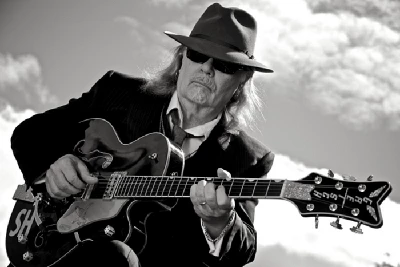
|
| Eoghan Lyng talks to influential guitarist Steve Hunter about his new EP 'Covered With Love' and his work with Alice Cooper, Peter Gabriel and Lou Reed. |
most viewed articles
current edition
Carl Ewens - David Bowie 1964 to 1982 On Track: Every Album, Every SongSimian Life - Interview
the black watch - Interview
John McKay - Interview
Editorial - July 2025
Billie Eilish - O2 Arena, London, 10/7/2025
Armory Show - Interview with Richard Jobson
Hothouse Flowers - Photoscapes
Bathers - Photoscapes 2
Cleo Laine - 1927-2025
previous editions
Trudie Myerscough-Harris - InterviewPixies - Ten Songs That Made Me Love...
Boomtown Rats - Ten Songs That Made Me Love....
Fall - Hex Enduction Hour
Heavenly - P.U.N.K. Girl EP
Peter Paul and Mary - Interview with Peter Yarrow
Sam Brown - Interview Part 2
And Also The Trees - Eventim Apollo, London, 21/12/2014.
Place to Bury Strangers - Interview
Miscellaneous - Charity Appeal
most viewed reviews
current edition
Sick Man of Europe - The Sick Man of EuropeAmy Macdonald - Is This What You've Been Waiting For?
Phew, Erika Kobayashi,, Dieter Moebius - Radium Girls
Alice Cooper - The Revenge of Alice Cooper
Blueboy - 2
Lucy Spraggan - Other Sides of the Moon
Cynthia Erivo - I Forgive You
Bush - I Beat Loneliness
Davey Woodward - Mumbo in the Jumbo
Philip Jeays - Victoria
Pennyblackmusic Regular Contributors
Adrian Janes
Amanda J. Window
Andrew Twambley
Anthony Dhanendran
Benjamin Howarth
Cila Warncke
Daniel Cressey
Darren Aston
Dastardly
Dave Goodwin
Denzil Watson
Dominic B. Simpson
Eoghan Lyng
Fiona Hutchings
Harry Sherriff
Helen Tipping
Jamie Rowland
John Clarkson
Julie Cruickshank
Kimberly Bright
Lisa Torem
Maarten Schiethart